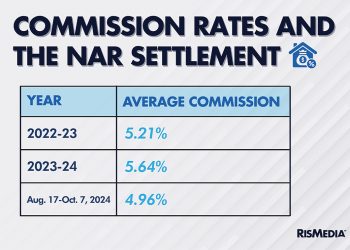By Randall Standard
RISMEDIA, Dec. 3, 2007-It’s just before Christmas 2012, and the snow is just beginning to fall. Reflecting on change within the real estate industry over the past five years, there is a lot that we (should) have learned. Some of the predictable changes included the 2008 post-election, taxpayer bailout of mortgage backed security holders, the Justice Department settlement of 2008, which paved the way for the introduction of the national MLS in 2009, and the eventual entry of banks into the real estate business in early 2010.
The biggest surprise, though, was the realization that the Internet (Web site marketing to be specific) was never really a solid business model for the real estate industry.
The post-boom years (2007-2010) will be remembered as the period when the real estate industry traded its future for exposure on the Web. Associations and brokers methodically transferred their gold (in the form of listing data) to Web site aggregation “partners.” Most in the industry ignored the fact that Web site-generated buyers constituted approximately 7% of total buyers at the time. The aggregation “partners” promoted their advertising model for revenue. This meant they would never pose a competitive threat to those from which they received listing data.
NAR provided research that confirmed the consumer preference for Web site marketing (“78% of buyers began their search on the Internet”). Broker reciprocity was limited to Web site marketing (IDX). These two seemingly disparate items combined to create a vortex of venture capital funding for start-up listing aggregation Web sites. The future competitive landscape was now limited to (just) Web site marketing. This enabled efficient and targeted investment into these firms.
Tragically, once the aggregators established dominance as search engine destinations, the pure advertising model morphed into a subscription model that promised enhanced marketing and placement for additional fees. Brokers and agents were eventually afforded the opportunity to pay for their own property leads. If they didn’t, someone else would. Brokers and associations withdrew their listing data in droves, but it was too late. The primary destinations for Web-based property search had been solidified with consumers.
If only real estate leaders had not ignored the fate of similar industries that utilized independent contractors for distribution. One by one, they were decimated by direct channel competition. There was a belief that the real estate industry could convert, in large part, its traditional business strategy to a Web-based model. They lost sight of the fact that talking to people was the industry’s strength.
The anonymity of the Web required the proliferation of social networking, podcast and blog technology vendors to help Realtors connect with the “millions” of property buyers online. It got expensive and time-consuming to harvest the incredible potential of the Web. Agents began to understand that Web leads, for the most part, were the least likely to convert to buyers. Slowly, Internet marketing budgets were diverted to new opportunities that facilitated more actual conversations with potential property buyers.
In retrospect, it was the lack of a user registration requirement on most property search sites that sealed the fate of the real estate Web site business model. As industry insiders began to grasp the magnitude of this flawed strategy, Web site aggregators ultimately retrenched back to the original advertising model and accepted their position as a peripheral part of the real estate business.
The value of the Realtor was revived in 2012 as agents repositioned themselves as negotiation specialists for both buyers and sellers. Real estate was, once again, recognized as a truly local business. People didn’t want to sell their own homes. Buyers really didn’t want to negotiate directly with a homeowner. Home selling was, and is, a complex, emotional transaction. Web site marketing was never going to change this. What were we thinking?
Randall Standard is the president and CEO of VoicePad.
For more information, please visit www.voicepad.com.










